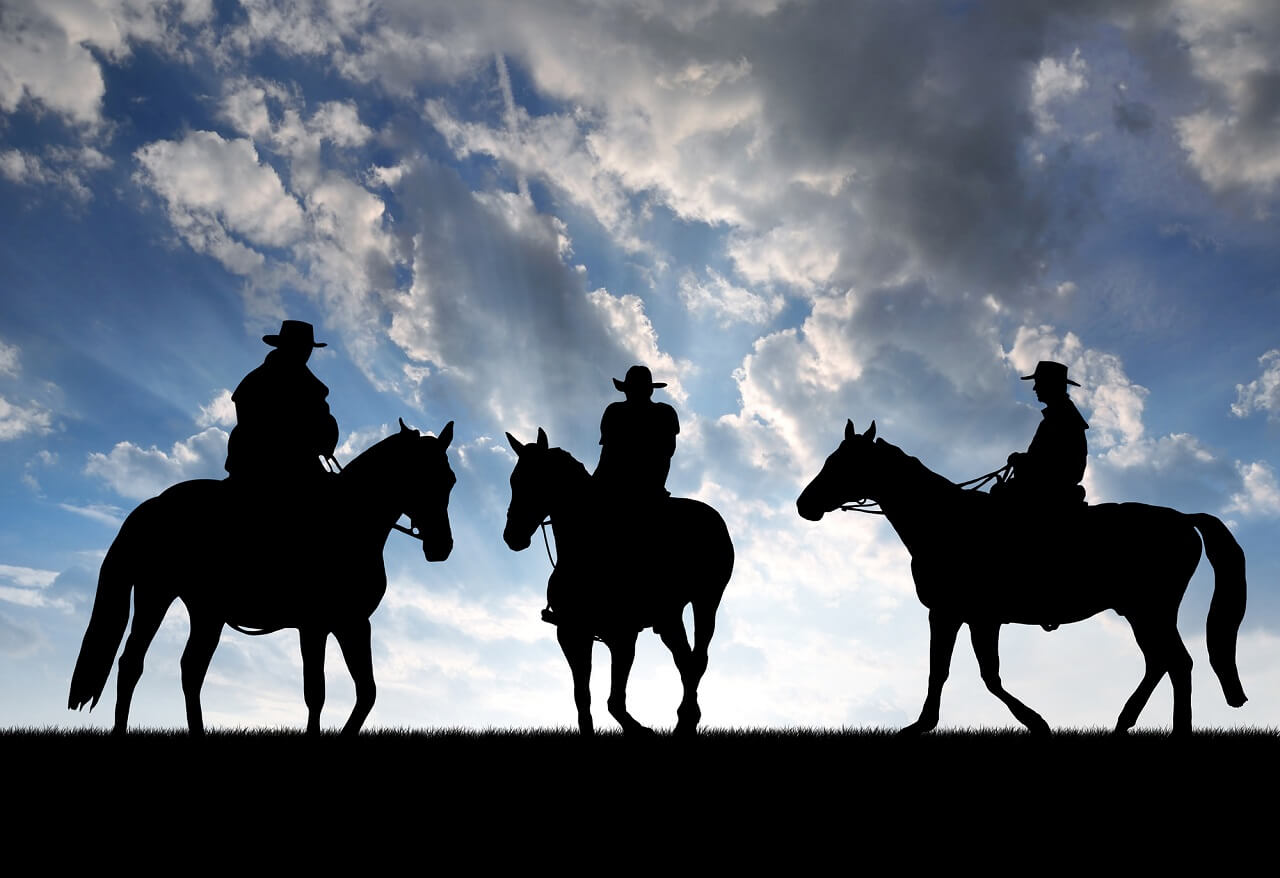Cattle ranching in the United States began over 300 years ago when the Spanish established missions in what is now the state of Texas. In the early 1700s, they established six missions as a way of protecting their claimed territories from French incursion. These missions stood for a couple of years and then were abandoned. In 1721, they were reestablished and re-populated with colonists, soldiers and priests. Nearly 5000 Spanish cattle were also installed. Read on to learn more about the history of ranching.
What You'll Learn Today
When Did Cattle Ranching Start?

Initially, the priests (who could arguably be termed the first ranchers) cared for the cattle, but as time passed, this task fell more to the soldiers who eventually became the first cowboys.
After about a decade, the missions closed down once more, and the descendants of the original cattle were left to roam freely over the vast Texas plains.
Today’s Texas Longhorn is a direct descendent of the free-roaming cattle that could be found on Texas planes between 1700 and 1865.
Why Did Cattle Ranching Develop In Texas?

When the ranch hand/cowboys/soldiers and the priests left the area, private citizens rounded up the herds and started driving them to markets in New Orleans.
Following the Civil War, many southern states fell into economic disarray. Having the Spanish cattle freely roaming across the state of Texas helped prevent this problem in the southwestern state.
From 1865 to 1885 around 10 million Longhorns were driven from the state of Texas to the state of Kansas to be put onto railcars and carried to slaughter houses in Chicago.
The era of the Texas cattle drive lasted for about 20 years. When rail lines expanded, driving cattle along the Chisholm Trail from Texas to the north was no longer required.
Additionally, when barbed wire was invented, it made it possible for ranchers to fence off their land. This made it extremely difficult to drive cattle across the range.
Barbed wire made it possible for farmers and ranchers to fence off and claim land for themselves and keep their cattle from roaming and being stolen. Fencing also made it possible to manage grazing land and prevent overgrazing.
The Texas Longhorn Was Almost Lost!
During this era, Longhorns became a threatened species because of an illness known as Texas fever. This was a tick born disease to which Longhorns were immune, but the illness was fatal to other types of cattle.
Fortunately for the existence of the Longhorn, the United States government established a study to understand this problem and prevent the extinction of Longhorn cattle.
In 1927, federal agents traveled to Oklahoma’s Wichita wildlife refuge to examine the few Longhorns that remained. The agents selected the best of the available specimens to use as base stock.
There were also private citizens who worked to preserve the unique breed. One was Frank Dobie who was a professor at the University of Texas at Austin.
In 1941, he published a book called The Longhorns in which he described and celebrated the iconic breed and recounted the tales of old time ranchers about the way of life that was made possible by the Texas Longhorn.
Finally, in 1969, an official state of Texas Longhorn herd was established by the Texas State Legislature. This herd now stays at the Fort Griffin State historic site which is managed by the Texas Historical Commission.
Texas Longhorn Cattle
Ranching & Longhorns Are An Important Part Of Texan Culture
Although the days of Texas Longhorn cattle drives are gone, ranching is still a very important part of Texas’s economy. Of all the states, Texas is first in cattle production, and there are nearly 250,000 ranches and farms in the state of Texas with which cover a total of over 130 million acres.
Early in the 21st century, the state of Texas had a gross annual income of over 10 billion dollars from the production of cattle. This equals about half of the state of Texas’s total commodities.
In addition to being a very important part of the economy of the state of Texas, cattle ranching is also a very important part of Texan culture. The Longhorn is the mascot of the University of Texas at Austin football team of the same name. This live mascot is traditionally named Bevo.
Staged cattle drives are an enjoyable tourist attraction. For example, at the Fort Worth Stock yards, visitors can see Longhorns strolling down the streets at scheduled times of day.
Why did Cattle Ranching Decline?

Ranching has not really declined in the US. Both in and outside of Texas, ranching is still an enduring American tradition. Today’s ranches are big business that can be also profitable. Running a ranch involves managing:
- Equipment such as trailers, loading shoots and farm equipment
- Extensive irrigation systems
- Many miles of fencing
- Multiple corrals
- Crops
Cattle management has changed, and long cattle drives on horseback are a thing of the past. Today, cattle are typically moved using trailers and trucks.
Ranching is hard work, and today’s ranchers must be able to wear many hats and perform a wide variety of jobs ranging from animal care to machine maintenance to land management.
Additionally, mundane, everyday tasks such as bookkeeping, hiring and firing, banking and typical business activities consume a great deal of modern ranchers time.
Very interesting. I’ve been a rancher for nearly 10 years but all of these facts really open up my eyes.